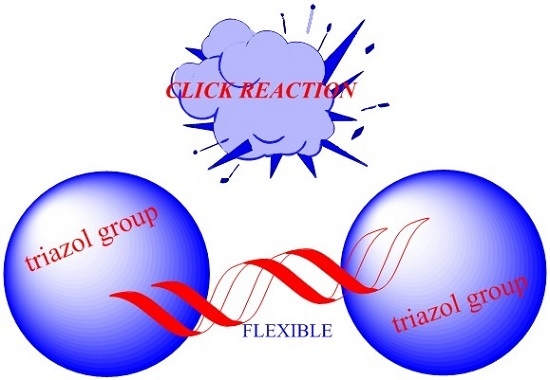Synthesis of Novel Symmetrical 1,4-Disubstituted 1,2,3-Bistriazole Derivatives via ‘Click Chemistry’ and Their Biological Evaluation
Abstract
:1. Introduction
2. Results and Discussion
3. Experimental Section
3.1. General Information
3.2. Synthesis of Compounds 2–5
3.3. General Synthesis Method for the 2–5(a–f)
3.4. Biological Activity
3.4.1. Acetylcholinesterase Inhibition Activity
3.4.2. DPPH Radical Scavenging Assay
3.4.3. Superoxide Radical Scavenging Assay
3.5. Antimicrobial Activity
4. Conclusions
Supplementary Materials
Acknowledgments
Author Contributions
Conflicts of Interest
References
- Bakunov, S.A.; Bakunova, S.M.; Wenzler, T.; Ghebru, M.; Werbovetz, K.A.; Brun, R.; Tidwell, R.R. Synthesis and antiprotozoal activity of cationic 1,4-diphenyl-1H-1,2,3-triazoles. J. Med. Chem. 2009, 53, 254–272. [Google Scholar] [CrossRef] [PubMed]
- Kelley, J.L.; Koble, C.S.; Davis, R.G. 1-(Fluorobenzyl)-4-amino-1H-1,2,3-triazolo[4,5-c]pyridines: Synthesis and anticonvulsant activity. J. Med. Chem. 1995, 38, 4131–4134. [Google Scholar] [CrossRef] [PubMed]
- Li, Q.H.; Ding, Y.; Huang, N.W. Synthesis and biological activities of dithiocarbamates containing 1,2,3-triazoles group. Chin. Chem. Lett. 2014, 25, 1469–1472. [Google Scholar] [CrossRef]
- Zhao, X.; Lu, B.W.; Lu, J.R. Design, synthesis and antimicrobial activities of 1,2,3-triazole derivatives. Chin. Chem. Lett. 2012, 23, 933–935. [Google Scholar] [CrossRef]
- Vicentini, C.B.; Brandolini, V.; Guarneri, M.; Giori, P. Pyrazolo[3,4-d][1,2,3]triazole-1-carboxamides and 5-alkylaminopyrazolo[3,4-d]oxazoles: Synthesis and evaluation of the in vitro antifungal activity. Farmaco 1992, 47, 1021–1034. [Google Scholar] [PubMed]
- Gaur, M.; Goel, M.; Sridhar, L.; Ashok, T.D.S.; Prabhakar, S.; Dureja, P.; Raghunathan, P.; Eswaran, S.V. Synthesis, characterization, and antifungal activity of biaryl-based bis(1,2,3-triazoles) using click chemistry. Mon. Chem. 2012, 143, 283–288. [Google Scholar] [CrossRef]
- Su, N.N.; Li, Y.; Yu, S.J.; Zhang, X.; Liu, X.H.; Zhao, W.G. Microwave-assisted synthesis of some novel 1,2,3-triazoles by click chemistry, and their biological activity. Res. Chem. Intermed. 2013, 39, 759–766. [Google Scholar] [CrossRef]
- D’Hooghe, M.; Vandekerckhove, S.; Mollet, K.; Vervisch, K.; Dekeukeleire, S.; Lehoucq, L.; Lategan, C.; Smith, P.J.; Chibale, K.; de Kimpe, N. Synthesis of 2-amino-3-arylpropan-1-ols and 1-(2,3-diaminopropyl)-1,2,3-triazoles and evaluation of their antimalarial activity. Beilstein J. Org. Chem. 2011, 7, 1745–1752. [Google Scholar] [CrossRef] [PubMed]
- Saikia, B.; Saikia, P.P.; Goswami, A.; Barua, N.C.; Saxena, A.K.; Suri, N. Synthesis of a novel series of 1,2,3-triazole-containing artemisinin dimers with potent anticancer activity involving Huisgen 1,3-dipolar cycloaddition reaction. Synthesis 2011, 19, 3173–3179. [Google Scholar]
- Boechat, N.; Ferreira, V.F.; Ferreira, S.B.; Ferreira, M.L.G.; da Silva, F.C.; Bastos, M.M.; Costa, M.S.; Lourenco, M.C.S.; Pinto, A.C.; Krettli, A.U.; et al. Novel 1,2,3-Triazole Derivatives for Use against Mycobacterium tuberculosis H37Rv (ATCC 27294) Strain. J. Med. Chem. 2011, 54, 5988. [Google Scholar] [CrossRef] [PubMed]
- Mubarak, H.S.; Dnyaneshwar, D.S.; Manisha, A.; Vijay, M.K.; Nandadeep, J.; Dhiman, S.; Bapurao, B.S. Synthesis and bioactivity of novel triazole incorporated benzothiazinone derivatives as antitubercular and antioxidant agent. Bioorg. Med. Chem. Lett. 2016, 26, 561–569. [Google Scholar]
- Agalave, S.G.; Maujan, S.R.; Pore, V.S. Click chemistry: 1,2,3-triazoles as pharmacop. Chem. Asian J. 2011, 6, 2696–2718. [Google Scholar] [CrossRef] [PubMed]
- Fan, W.Q.; Katritzky, A.R. Comprehensive Heterocyclic Chemistry II; Katritzky, A.R., Rees, C.W., Scriven, E.F.V., Eds.; Elsevier Science: Oxford, UK, 1996; Volume 4, pp. 1–126. [Google Scholar]
- Kumar, K.K.; Kumar, R.M.; Subramanian, V.; Mohan Das., T. Expedient synthesis of coumarin-coupled triazoles via ‘click chemistry’ leading to the formation of coumarin-triazole-sugar hybrids. Carbohydr. Res. 2010, 345, 2297–2304. [Google Scholar] [CrossRef] [PubMed]
- Hein, J.E.; Tripp, J.C.; Krasnova, L.B.; Sharpless, K.B.; Fokin, V.V. Copper(I)-catalyzed cycloaddition of organic azides and 1-iodoalkynes. Angew. Chem. Int. Ed. 2009, 48, 8018–8021. [Google Scholar] [CrossRef] [PubMed]
- Rostovtsev, V.V.; Green, L.G.; Fokin, V.V.; Sharpless, K.B. A Stepwise huisgen cycloaddition process: Copper(I)-catalyzed regioselective “Ligation” of azides and terminal alkynes. Angew. Chem. Int. Ed. 2002, 41, 2708–2711. [Google Scholar] [CrossRef]
- Renate, H.H.; Eric, M.G.; Carmen, L.; Peter, J.S.; Baojie, W.; Scott, G.F.; Jiri, G.; Philip, J.R.; Kelly, C. Synthesis, antimalarial and antitubercular activity of acetylenicchalcones. Bioorg. Med. Chem. Lett. 2010, 20, 942–944. [Google Scholar]
- Soares, J.R.; Dinis, T.C.P.; Cunha, A.P.; Almeida, L.M. Antioxidant activities of some extracts of Thymuszygis. Free Radic. Res. 1997, 26, 469–478. [Google Scholar] [CrossRef] [PubMed]
- Zhou, B.; Li, B.; Yi, W.; Bu, X.; Ma, L. Synthesis, antioxidant, and antimicrobial evaluation of some 2-arylbenzimidazole derivatives. Bioorg. Med. Chem. Lett. 2013, 23, 3759–3763. [Google Scholar] [CrossRef] [PubMed]
- Ellman, G.L.; Courtney, K.D.; Andres, V.; Featherstone, R.M. A new andrapid colorimetric determination of acetylcholinesterase activity. Biochem. Pharmacol. 1961, 7, 88–95. [Google Scholar] [CrossRef]
- Ingkaninan, K.; Best, D.; Heijden, V.D.; Hofte, A.J.P.; Karabatak, B.; Irth, H.; Tjaden, U.R.; Greef, V.D.; Verpoorte, R. High-performance liquid chromatography with on-linecoupled UV, mass spectrometric and biochemical detection for identification of acetylcholinesterase inhibitors from natural products. J. Chromatogr. 2000, 872, 61–73. [Google Scholar] [CrossRef]
- Sharma, S.D.; Rajor, H.K.; Chopra, S.; Sharma, R.K. Studies on structure activity relationship of some dihydroxy-4-methyl coumarin antioxidants based on their interaction with Fe(III) and ADP. Biometals 2005, 18, 143–154. [Google Scholar] [CrossRef] [PubMed]
- Blois, M.S. Antioxidant determinations by the use of a stable free radical. Nature 1958, 181, 1199–1200. [Google Scholar] [CrossRef]
- Perez, C.; Pauli, M.; Bazerque, P. An antibiotic assay by the well agar method. Acta Biol. Med. Exp. 1990, 15, 113–115. [Google Scholar]
- Ahmad, I.; Mehmood, Z.; Mohammed, F. Screening of some Indian medicinal plants for their antimicrobial properties. J. Ethnopharmcol. 1998, 62, 183–193. [Google Scholar] [CrossRef]
- Woods, G.L.; Brown-Elliott, B.A.; Desmond, E.P.; Hall, G.S.; Heifets, L.; Pfyffer, G.E.; Ridderhof, J.C.; Wallace, R.J.; Warren, N.C.; Witebsky, F.G. Susceptibility testing of mycobacteria, nocardiae, and other aerobic actinomycetes; Approved Standard. NCCLS Doc. M24-A 2003, 18, 20–31. [Google Scholar]
- Sample Availability: Not Available.
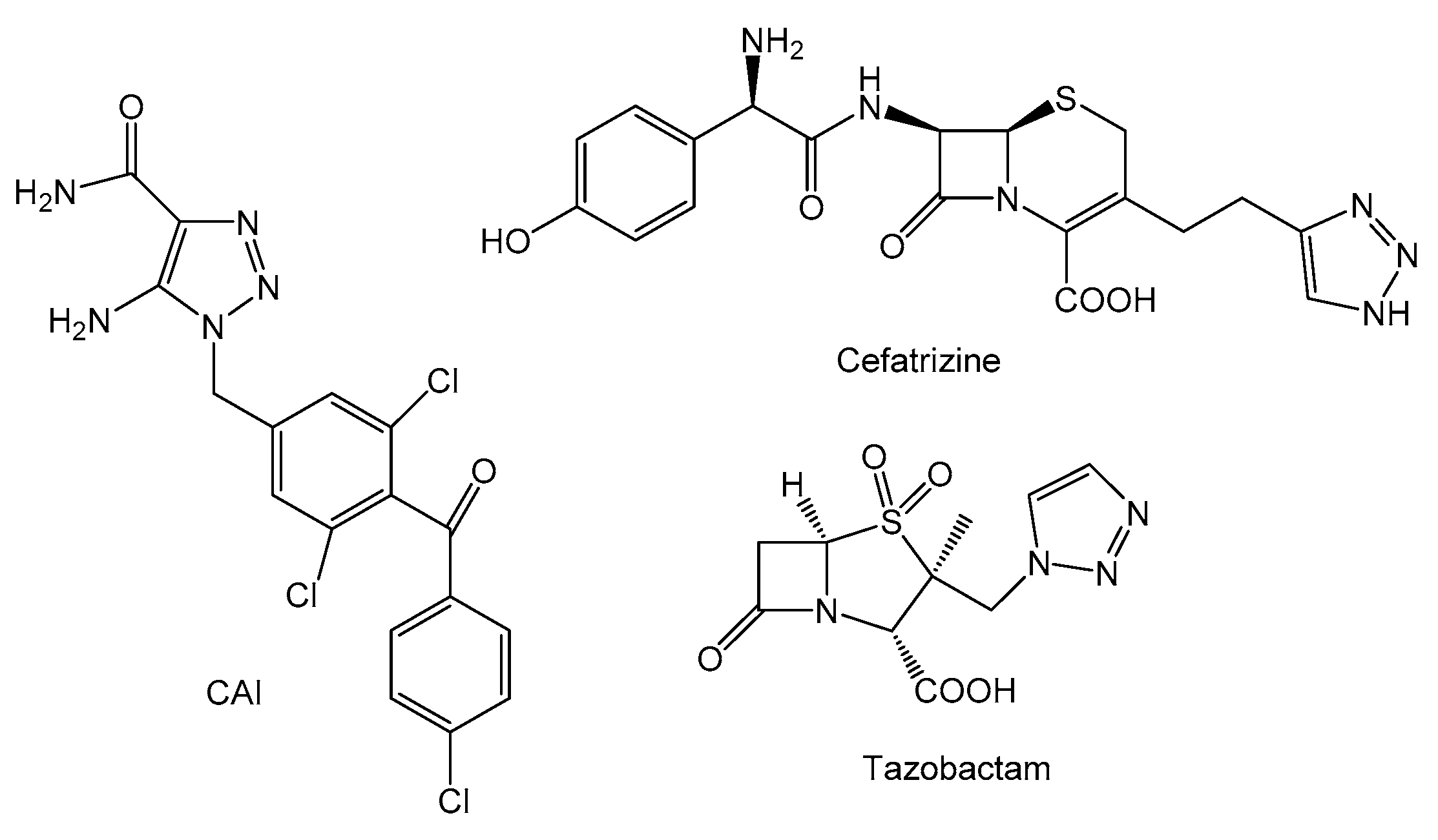
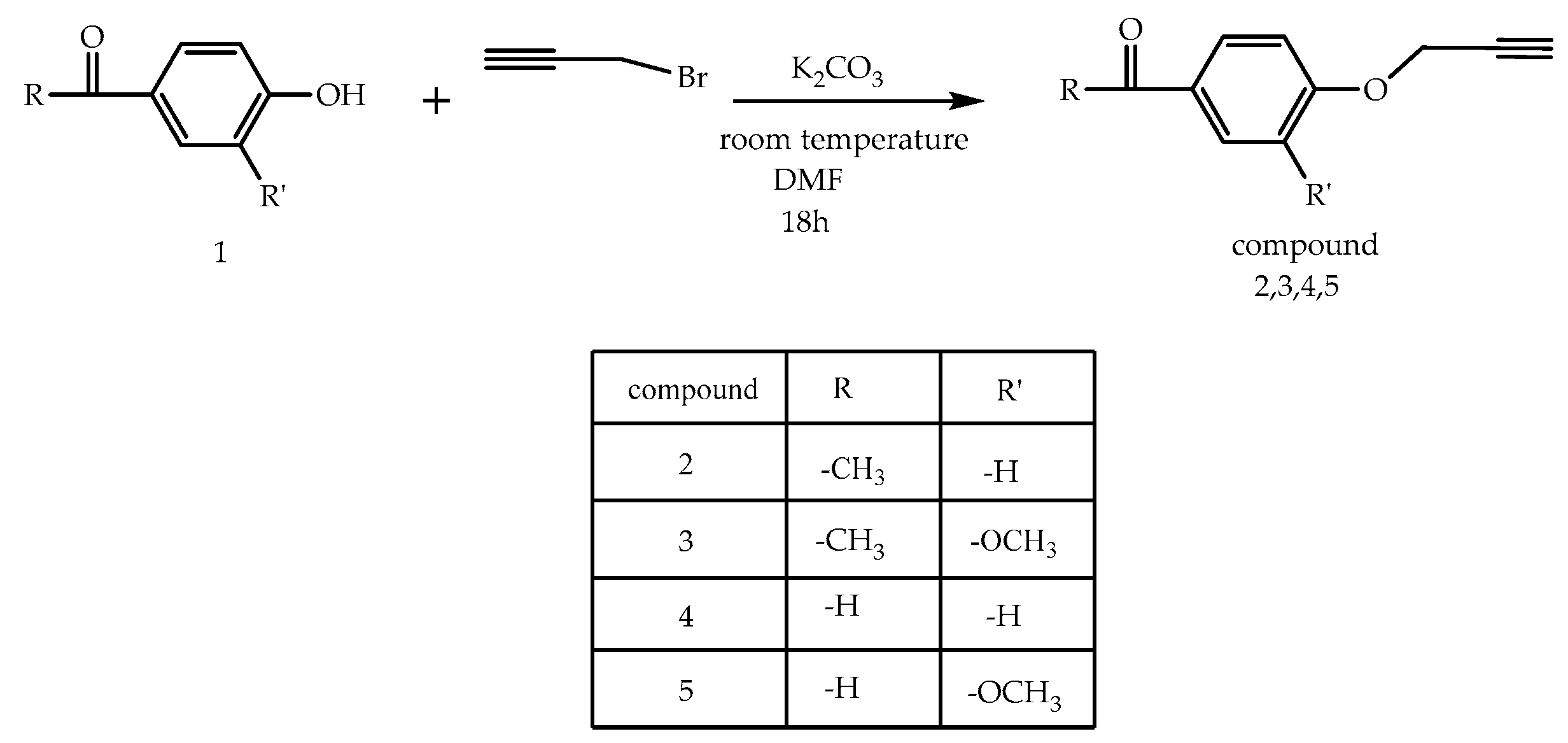
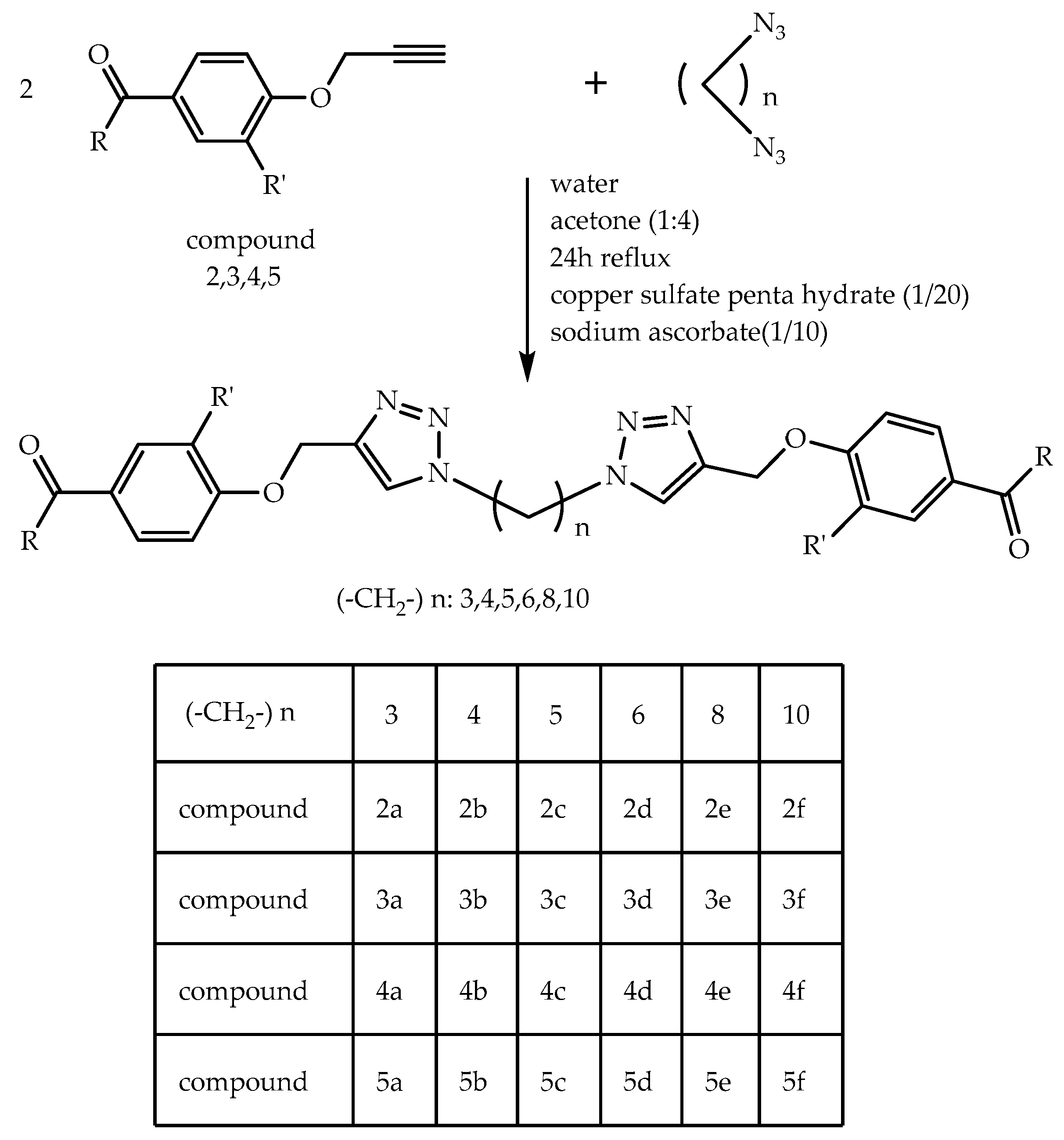
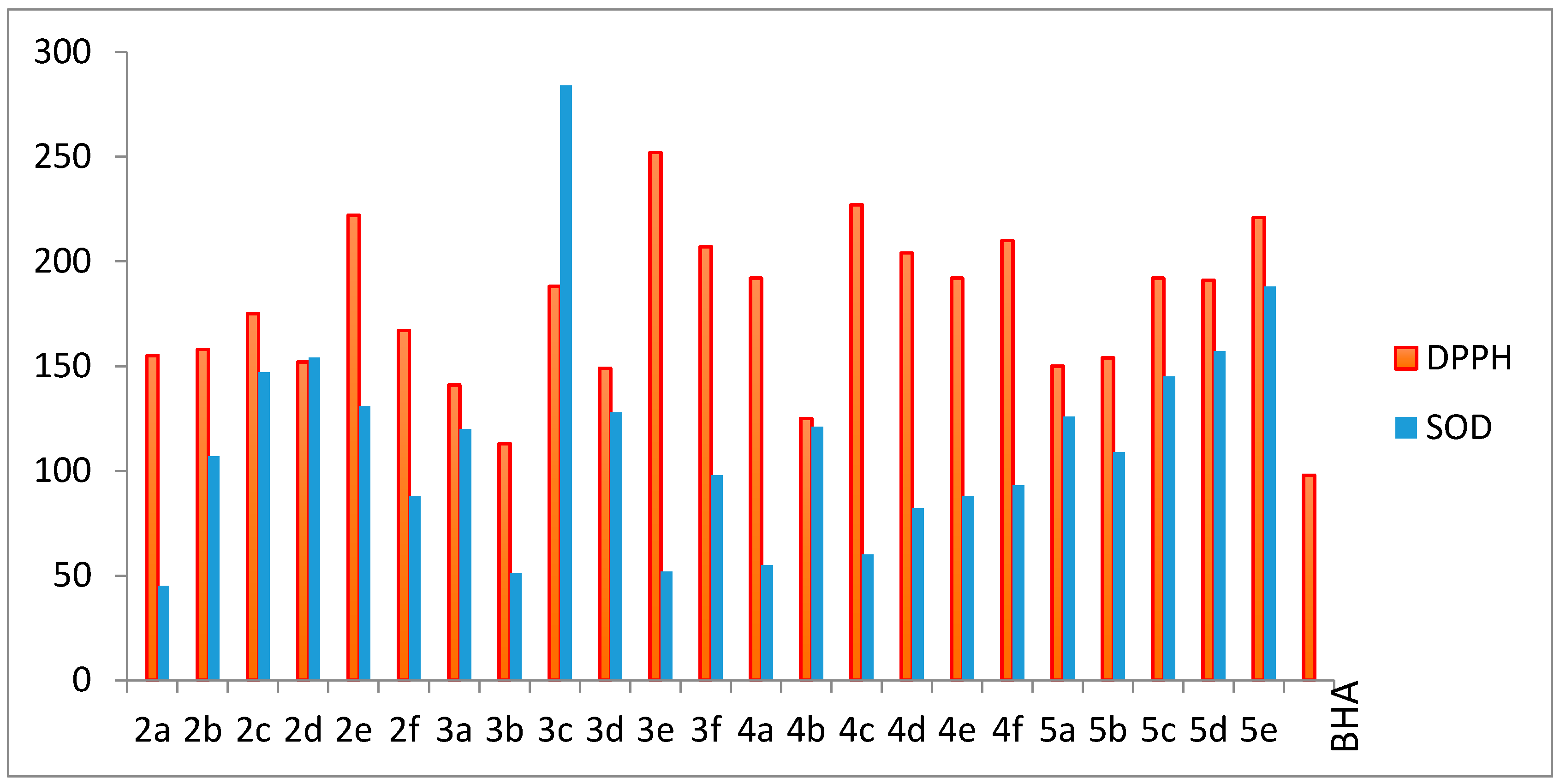
| Compound | AChE IC50 (µM) | DPPH IC50 (µg/mL) | SOD IC50 (µg/mL) |
|---|---|---|---|
| 2a | 64.65 (±2.05) | 155.49 (±0.08) | 45.12 (±0.04) |
| 2b | 52.29 (±0.16) | 158.72 (±0.05) | 107.54 (±0.07) |
| 2c | 67.03 (±1.62) | 175.65 (±0.06) | 147.36 (±0.05) |
| 2d | 62.41 (±0.85) | 152.84 (±0.05) | 154.79 (±0.06) |
| 2e | 66.38 (±2.50) | 222.16 (±0.07) | 131.43 (±0.06) |
| 2f | 50.80 (±1.01) | 167.51 (±0.05) | 88.15 (±0.06) |
| 3a | 63.28 (±0.96) | 141.57 (±0.08) | 120.53 (±0.04) |
| 3b | 56.98 (±3.87) | 113.63 (±0.05) | 51.37 (±0.07) |
| 3c | 75.70 (±6.97) | 188.45 (±0.11) | 284.10 (±0.07) |
| 3d | 75.74 (±7.19) | 149.21 (±0.06) | 128.24 (±0.10) |
| 3e | 56.99 (±0.74) | 252.68 (±0.06) | 52.89 (±0.06) |
| 3f | 78.60 (±0.81) | 207.57 (±0.09) | 98.35 (±0.06) |
| 4a | 62.82 (±1.07) | 192.02 (±0.12) | 55.67 (±0.08) |
| 4b | 74.13 (±7.5) | 125.05 (±0.08) | 121.74 (±0.08) |
| 4c | 83.37 (±1.19) | 227.38 (±0.07) | 60.32 (±0.07) |
| 4d | 58.49 (±0.72) | 204.31 (±0.11) | 82.77 (±0.11) |
| 4e | 63.39 (±0.09) | 192.04 (±0.09) | 88.86 (±0.09) |
| 4f | 62.52 (±2.55) | 210.33 (±0.08) | 93.47 (±0.09) |
| 5a | 74.69 (±0.84) | 150.03 (±0.08) | 126.2 (±0.07) |
| 5b | 61.85 (±3.54) | 154.51 (±0.07) | 109.17 (±0.10) |
| 5c | 69.41 (±0.72) | 192.46 (±0.11) | 145.68 (±0.11) |
| 5d | 70.31 (±4.65) | 191.39 (±0.08) | 157.14 (±0.07) |
| 5e | 61.81 (±2.57) | 221.57 (±0.06) | 188.84 (±0.08) |
| Galantamine | 15.09 (±0.01) | - | - |
| BHA | - | 98.56 (±0.08) | - |
| Compounds | Stock Concentration (µg/mL) | Microorganisms and Inhibition Zone | ||||||||
|---|---|---|---|---|---|---|---|---|---|---|
| Ec | Yp | Pa | Sa | Ef | Bc | Ms | Ca | Sc | ||
| 2a | 474000 | 10 | - | - | - | - | - | - | - | - |
| 2b | 488000 | 12 | - | - | - | - | - | - | - | - |
| 2c | 502000 | 12 | - | - | - | - | - | - | 6 | 8 |
| 2d | 516000 | 12 | - | - | - | - | - | - | 6 | 8 |
| 2e | 544000 | 12 | - | - | - | - | - | - | - | 6 |
| 2f | 572000 | 10 | - | - | - | - | - | - | - | 6 |
| 3a | 534000 | 10 | - | - | - | - | - | - | 6 | 6 |
| 3b | 548000 | - | - | - | - | - | - | - | - | - |
| 3c | 562000 | 8 | 6 | - | - | - | - | - | - | - |
| 3d | 576000 | 8 | 6 | - | - | - | - | - | - | - |
| 3e | 604000 | 12 | 8 | - | - | - | - | - | - | - |
| 3f | 632000 | 8 | 6 | - | - | - | - | - | - | - |
| 4a | 446000 | - | - | - | - | - | - | - | - | - |
| 4b | 460000 | - | - | - | - | - | - | - | 6 | 6 |
| 4c | 474000 | 10 | - | - | - | - | - | - | 6 | 6 |
| 4d | 488000 | - | - | - | - | - | - | - | - | 6 |
| 4e | 516000 | - | - | - | - | - | - | - | 6 | 6 |
| 4f | 544000 | 8 | 8 | - | - | - | - | - | - | - |
| 5a | 506000 | 12 | 8 | - | - | - | - | - | - | - |
| 5b | 520000 | 10 | 8 | - | - | - | - | - | - | - |
| 5c | 534000 | 10 | 8 | - | - | - | - | - | - | - |
| 5d | 548000 | 10 | 8 | - | - | - | - | - | - | - |
| 5e | 576000 | 10 | 6 | - | - | - | - | - | - | - |
| 5f | 604000 | 8 | 6 | - | - | - | - | - | - | - |
| Amp | 10 | 10 | 18 | 10 | 35 | 15 | ||||
| Strep | 35 | |||||||||
| Flu. | 25 | 25 | ||||||||
© 2016 by the authors. Licensee MDPI, Basel, Switzerland. This article is an open access article distributed under the terms and conditions of the Creative Commons Attribution (CC-BY) license ( http://creativecommons.org/licenses/by/4.0/).
Share and Cite
Düğdü, E.; Ünlüer, D.; Çelik, F.; Sancak, K.; Alpay Karaoğlu, Ş.; Özel, A. Synthesis of Novel Symmetrical 1,4-Disubstituted 1,2,3-Bistriazole Derivatives via ‘Click Chemistry’ and Their Biological Evaluation. Molecules 2016, 21, 659. https://doi.org/10.3390/molecules21050659
Düğdü E, Ünlüer D, Çelik F, Sancak K, Alpay Karaoğlu Ş, Özel A. Synthesis of Novel Symmetrical 1,4-Disubstituted 1,2,3-Bistriazole Derivatives via ‘Click Chemistry’ and Their Biological Evaluation. Molecules. 2016; 21(5):659. https://doi.org/10.3390/molecules21050659
Chicago/Turabian StyleDüğdü, Esra, Dilek Ünlüer, Fatih Çelik, Kemal Sancak, Şengül Alpay Karaoğlu, and Arzu Özel. 2016. "Synthesis of Novel Symmetrical 1,4-Disubstituted 1,2,3-Bistriazole Derivatives via ‘Click Chemistry’ and Their Biological Evaluation" Molecules 21, no. 5: 659. https://doi.org/10.3390/molecules21050659





